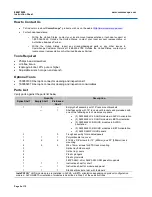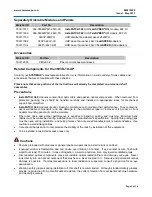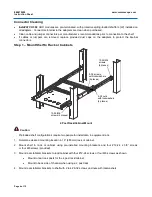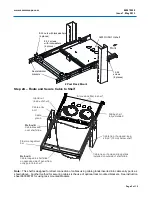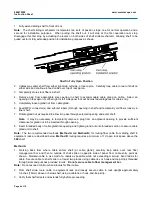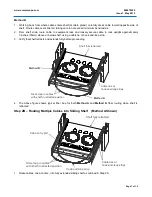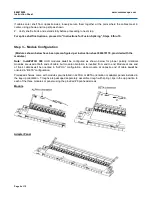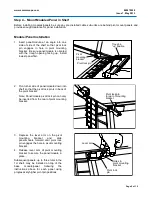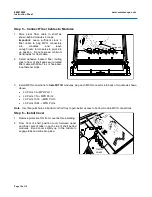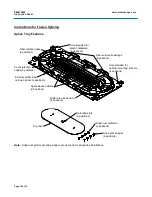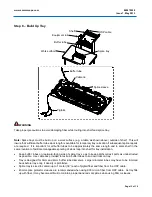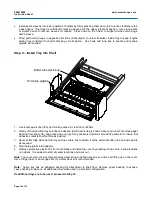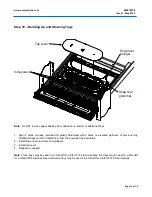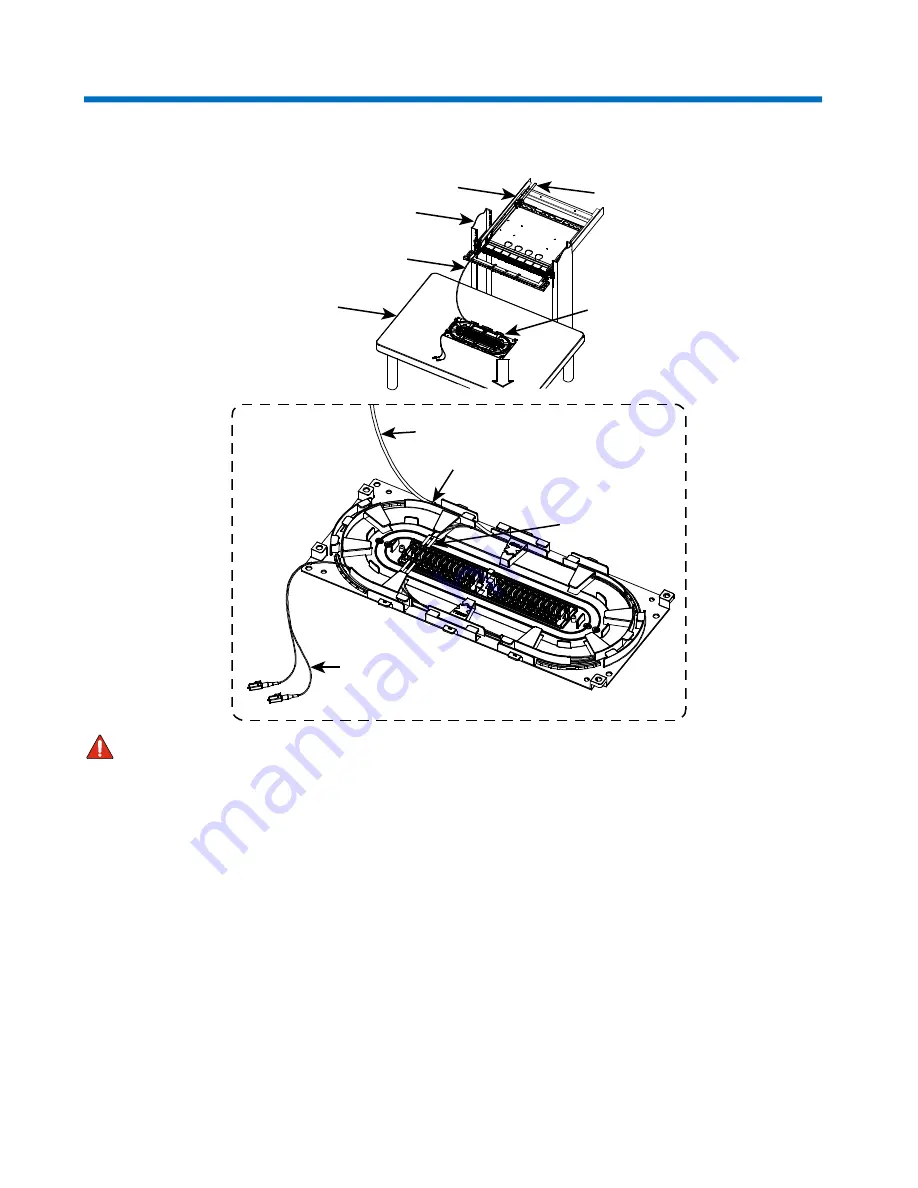
www.commscope.com
860479229
Issue 7, May 2013
Page 13 of 15
Step 8 – Build Up Tray
Shelf
Equipment rail
Buffer tube
Work surface
OSP cable
Splice tray
Buffer tube
Cable tie
Pigtails
Splice sleeve
WARNING
Take proper precautions to avoid damaging fiber while routing into shelf and splice tray.
Note:
Splice trays must be built up on a work surface (e.g. a table, as shown above) outside of shelf. This will
insure that sufficient buffer tube slack length is available for temporary tray relocation if subsequent splice repairs
are required. It is important for all buffer tubes to be approximately the same length and to enter shelf in the
same location to facilitate manageable spooling of slack loop into shelf for tray installation.
•
Keep buffer tubes on rearward-facing side of splice tray so as to keep patchcord exit ports as unobstructed
as possible. Use cable ties provided to restrain buffer tubes to tie-down rails on tray.
•
Tray is designed for 3mm and 4mm buffer tube diameters. Larger diameter tubes may have to be trimmed
back before tray entry, if density is prohibitive.
•
Splice tray is sized to contain up to 1 meter (39”) each of pigtail fiber and fiber from the OSP cable.
•
40mm splice protector sleeves are recommended when using 900 micron fiber from OSP cable. As tray fills
up with fiber, it may become difficult to maintain proper bend radii at splices when using 60mm sleeves.


